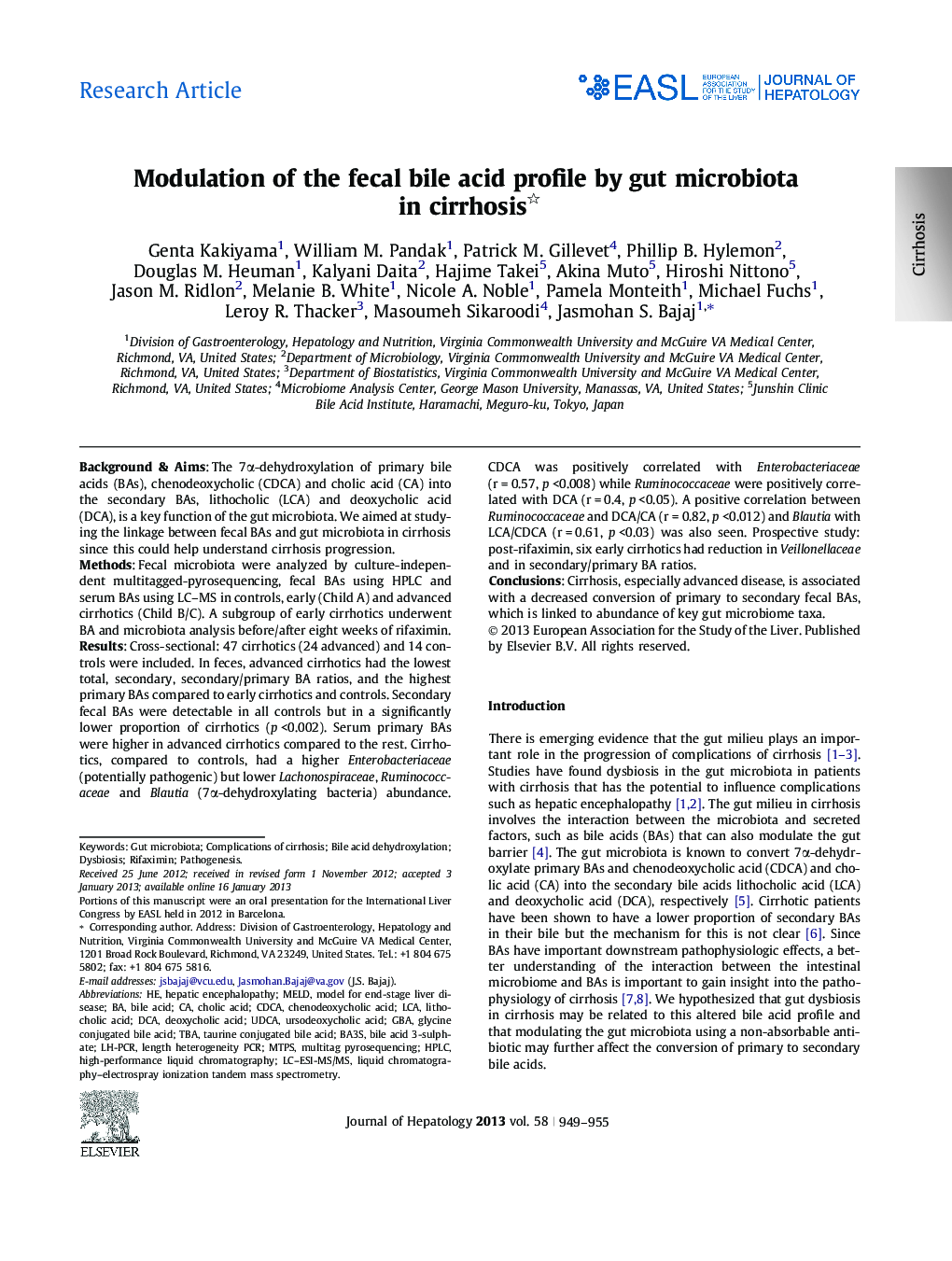| کد مقاله | کد نشریه | سال انتشار | مقاله انگلیسی | نسخه تمام متن |
|---|---|---|---|---|
| 6105042 | 1211144 | 2013 | 7 صفحه PDF | دانلود رایگان |
Background & AimsThe 7α-dehydroxylation of primary bile acids (BAs), chenodeoxycholic (CDCA) and cholic acid (CA) into the secondary BAs, lithocholic (LCA) and deoxycholic acid (DCA), is a key function of the gut microbiota. We aimed at studying the linkage between fecal BAs and gut microbiota in cirrhosis since this could help understand cirrhosis progression.MethodsFecal microbiota were analyzed by culture-independent multitagged-pyrosequencing, fecal BAs using HPLC and serum BAs using LC-MS in controls, early (Child A) and advanced cirrhotics (Child B/C). A subgroup of early cirrhotics underwent BA and microbiota analysis before/after eight weeks of rifaximin.ResultsCross-sectional: 47 cirrhotics (24 advanced) and 14 controls were included. In feces, advanced cirrhotics had the lowest total, secondary, secondary/primary BA ratios, and the highest primary BAs compared to early cirrhotics and controls. Secondary fecal BAs were detectable in all controls but in a significantly lower proportion of cirrhotics (p <0.002). Serum primary BAs were higher in advanced cirrhotics compared to the rest. Cirrhotics, compared to controls, had a higher Enterobacteriaceae (potentially pathogenic) but lower Lachonospiraceae, Ruminococcaceae and Blautia (7α-dehydroxylating bacteria) abundance. CDCA was positively correlated with Enterobacteriaceae (r = 0.57, p <0.008) while Ruminococcaceae were positively correlated with DCA (r = 0.4, p <0.05). A positive correlation between Ruminococcaceae and DCA/CA (r = 0.82, p <0.012) and Blautia with LCA/CDCA (r = 0.61, p <0.03) was also seen. Prospective study: post-rifaximin, six early cirrhotics had reduction in Veillonellaceae and in secondary/primary BA ratios.ConclusionsCirrhosis, especially advanced disease, is associated with a decreased conversion of primary to secondary fecal BAs, which is linked to abundance of key gut microbiome taxa.
Journal: Journal of Hepatology - Volume 58, Issue 5, May 2013, Pages 949-955
